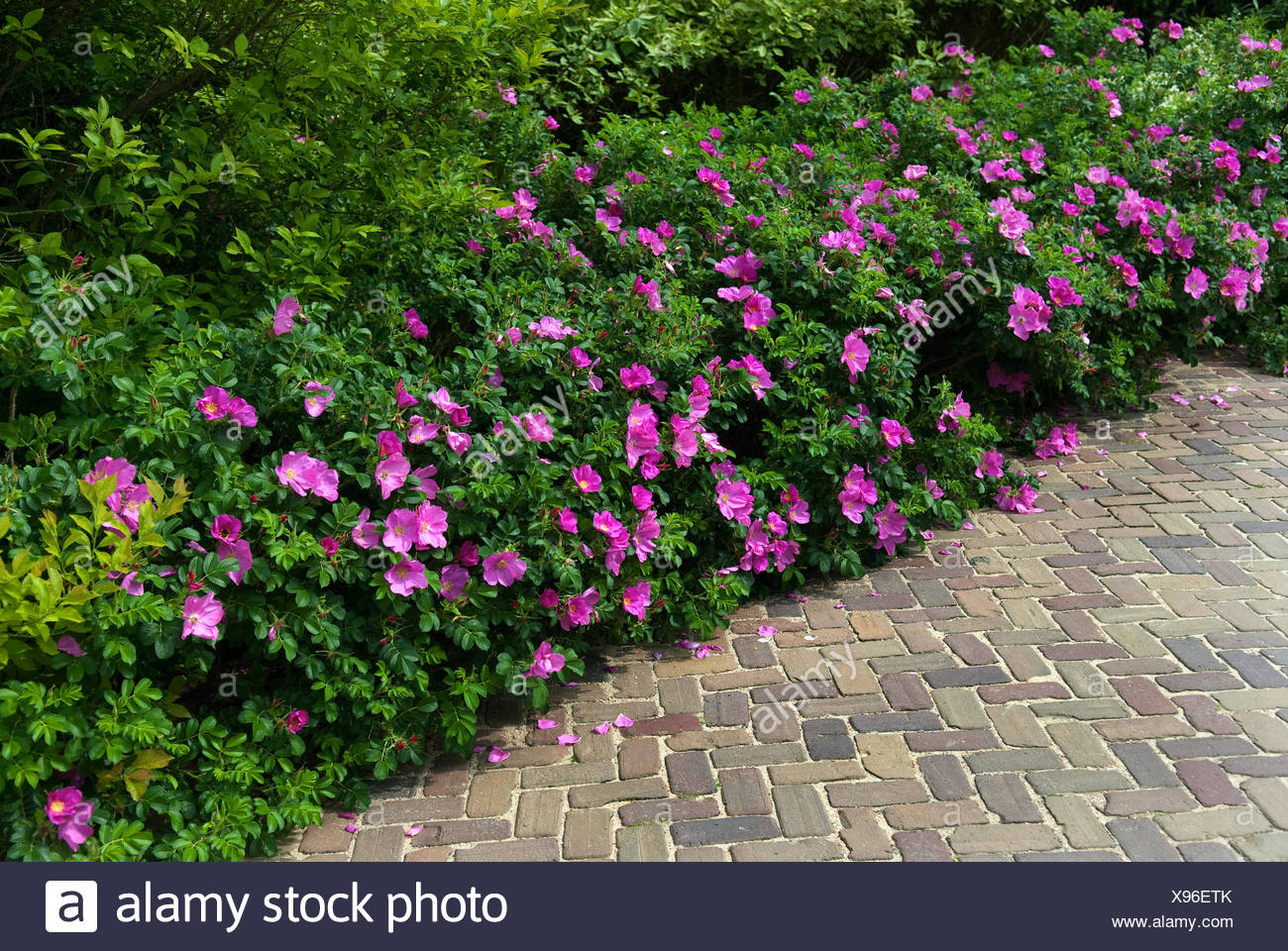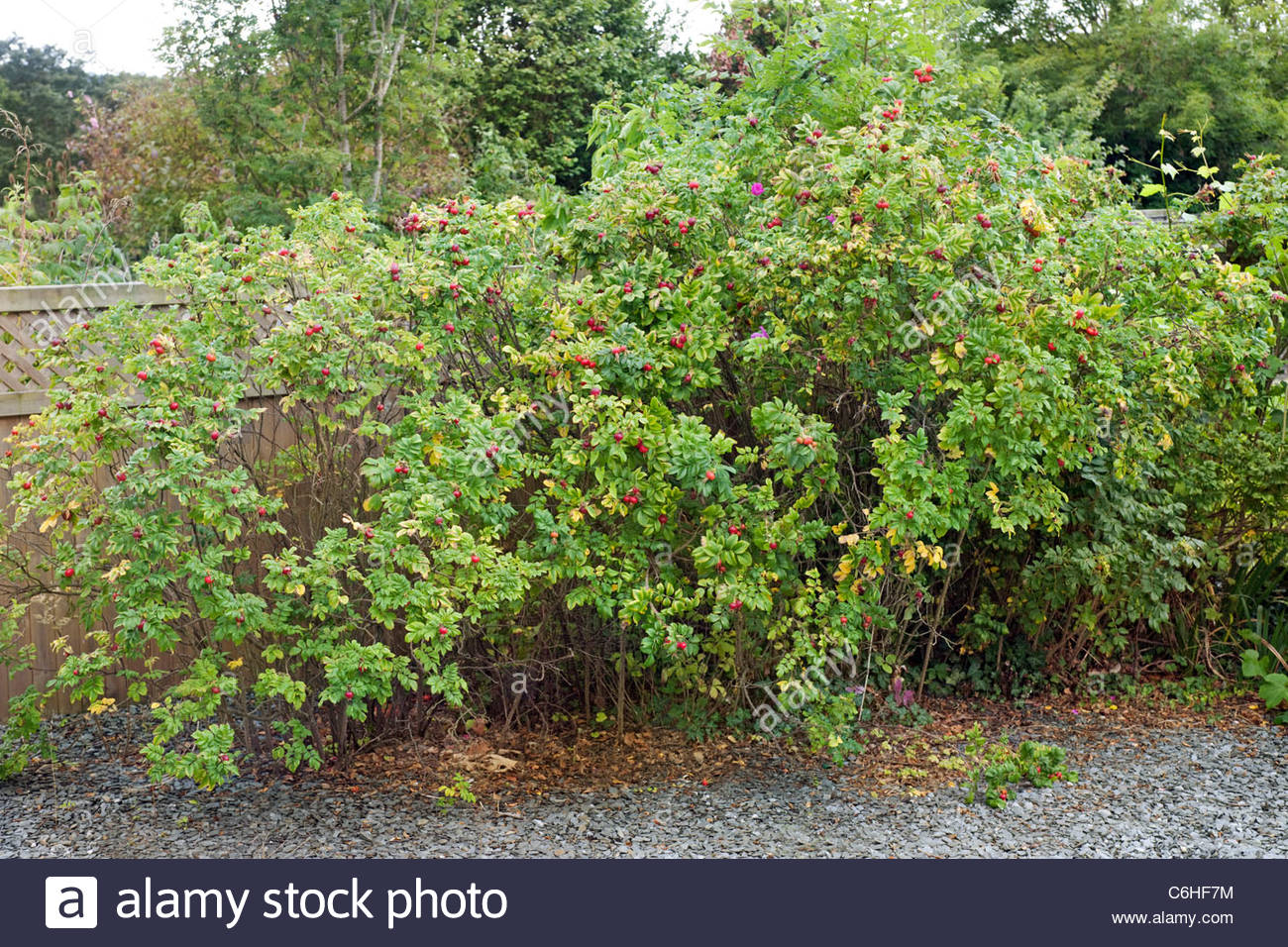
Gardening 101 Rosa Rugosa Gardenista Sourcebook for Outdoor Living Bloglovin’
A tangled, prickly shrub, Rosa rugosa will form an effective privacy hedge at the edge of a property. Its growth habit (it spreads via underground suckers) is useful for stabilizing erosion-prone slopes. (Visited 200 times, 1 visits today) Advertisement 1-3 of 14

Rugosa Rose High Resolution Stock Photography and Images Alamy
Rugosa Roses are one of the hardiest and easiest roses to grow not only in cold climates, but nearly every American growing zone. Detailed descriptions, care information and pictures for hardy Rugosa Roses.

rugosa rose hedge Rose hedge, Garden design, Plants
A rose hedge will inspire a feeling of privacy and security while being nestled in amongst the fragrant bounty of beautiful blossoms. 1. Security and Privacy A rose hedge may grow just 2 to 3 feet tall to perfectly delineate a garden space. However, shrub roses might reach 8 to 10 feet high and 6 feet wide and provide a lot of privacy and security.

Darts Dash Rugosa Rose....back of perennial bed or hedge cottage style garden Pinterest
Perfect as a specimen plant. Give it some space so that its canes can soar or flop as they like, and enjoy their undisciplined habit. Because of its tolerance for salt and sand, this rose can be planted along ocean shores to help stabilize beaches and control beach erosion.

rugosa roses hedging Rose, Hedges, Garden
Height: 2.4m Spread: 2.4m Hardy Attractive to wildlife Scented flowers Flower colour: Foliage colour: Position Soil Rosa rugosa is a tough, easy to grow rose bearing pink, scented blooms followed by bright scarlet hips. Its dense, vigorous growth and prickly stems make it perfect for hedging.
25 Red Wild Rose Hedging 4060cm Plants,Rosa Rugosa Rubra, Flowers For 6mth eBay
Description Red Rugosa Rose Bushes - The Rugosa Rose Red Shrubs hedge shrub roses are wonderfully fragrant blossoms that repeat throughout summer on this selection of the Rosa rugosa species. Blossoms of the Red Rugosa Roses are followed by very large orange-red hips in late summer and last all winter.

Orkney Image Library Hedge of Rosa rugosa 'Plena' Sloped garden, Pollinator garden, Rose hedge
Family: Rosaceae Origin: China, Japan, Korea Height: 3 to 6 feet (depending on variety) (1 to 2 m) Form: bushy Flowering: May to October-November Repeat-blooming: yes Flower color: red, pink, white Planting: spring and autumn Exposure: sunny Hardiness: 5°F and higher (-15°C and higher) Soil: rich and drained Use: flowering or defensive hedge

rosa rugosa alba Розы, Цветущие кустарники, Белые розы
Above: While its garden companions keel over, R. rugosa thrives, its shiny red globes enhanced by healthy foliage that turns to cadmium yellow. As a wind- and salt-resistant shrub, its ease in tough conditions is illustrated by a thuggish attitude on sand dunes and waterfront properties. Above: Rosa rugosa 'Alba' still flowering away in.
-Flower-Close-Up.jpg)
Rosa Rugosa Rubra Rosa Rugosa Pink Hedges Direct UK
Rugosa rose is a hardy, multi-stemmed, disease-resistant deciduous suckering shrub rose in the Rosaeceae family that is native to eastern Asia, in northeastern China, Japan, Korea and southeastern Siberia, The genus name, Rosa, originates from the Latin name for rose.

Pin on Gardening/Landscaping
Charles Albanel rugosa rose (Rosa rugosa 'Charles Albanel'): A small, 2 to 3 feet high and wide mounded shrub with double mauve flower in summer, followed by bright orange-red rose hips. Fall color is a golden yellow. Frau Dagmar Hastrup rugosa rose (Rosa rugosa 'Frau Dagmar Hastrup'): Grows 3 to 4 feet high and wide.

Rosa rugosa hedge Stock Photo 38493832 Alamy
What is a Rugosa Rose? Also known as Japanese rose, rugosa rose bushes are beloved for their adaptability and floriferous habit. Quickly forming dense thickets of growth, these bushes are especially attractive to pollinators.

Hedge of Rosa rugosa... stock photo by Carole Drake, Image 0526658
Grows up to 4-6 ft. tall and wide (120-180 cm) on canes that are thickly covered with abundant sharp thorns. Unless restrained, this shrub rose will spread by suckers to form dense thickets over time. Best grown in full sun to part shade, in humus-rich, moist, well-drained soils. Tolerant of poor soils, sandy soils, clay soils, salt, and drought.

Hedge of Rosa Rugosa. Hedges, Veg garden, Plants
Fill the hole with soil and firm it with your hands. Mound soil up around the base of each plant, covering the bottom 1 to 2 inches of the canes. Keep your rugosa rose hedge moist but not wet until vigorous growth is underway. Prune annually to remove damaged or diseased canes. Remove the oldest canes to ensure bloom.

Hardy Rugosa Roses. Single, deep pink flowers. Fragrant, Disease Resistant, Salt tolerant. Makes
Best of both worlds! 4. Sir Thomas Lipton (Rosa Rugosa) The Sir Thomas Lipton rugosa rose was bred by Dr. Walter Van Fleet in the United States sometime before 1900. The variety was also introduced in the United States by Conard-Pyle (Star Roses) in 1900. The blooms of this rose are white with a hint of light pink and have large doubled flowers.

The Charm of Rugosa Roses Landscaping with roses, Rose garden design, Roses in landscaping
Work compost into the planting location. Place the plant in the hole and fill with soil. You can also propagate rosa rugosa from cuttings of other plants. This process is also simple. After the rose has finished blooming, cut the tips off the end of the stem. You'll need an eight-inch cutting.

Rugosa rose, Japanese rose (Rosa rugosa), rose hedge Stock Photo Alamy
The rugosa rose shrub ( Rosa rugosa) is a hardy rose with beautiful, fragrant flowers. The blooms generally have five petals, though there are semi-double and double bloom varieties. The shrubs grow in a rounded form with dark green foliage on thorny canes, and they are roughly as tall as they are wide.